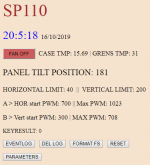I know, the current opinion seems to be that active tracking isn't worth the expense and maintenance issues. Adding panels is simpler. That seems reasonable since the cost per watt of panels is at all time lows. There are however instances were the real estate to do that isn't available.
I have a couple of portable designs in mind I'd like to explore and have a simple timer relay system sketched out to control them. I might also try a sensor based controller
Does anyone have any experience with those dual axis tracking controllers i see for sale?
Btw, Will, this forum is looking pretty good! Congratulations.
I have a couple of portable designs in mind I'd like to explore and have a simple timer relay system sketched out to control them. I might also try a sensor based controller
Does anyone have any experience with those dual axis tracking controllers i see for sale?
Btw, Will, this forum is looking pretty good! Congratulations.





